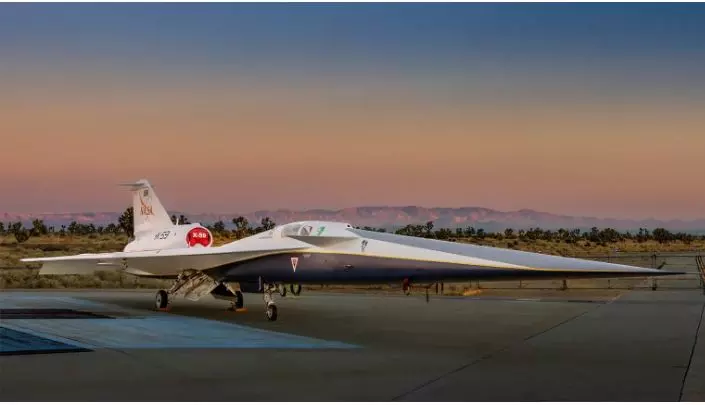
NASA unveils quiet supersonic aircraft set to redefine commercial flight
text_fieldsIn a step toward making commercial supersonic flight a reality, NASA, in collaboration with Lockheed Martin Skunk Works, unveiled the X-59, a unique and quiet supersonic aircraft.
The experimental plane, showcased at a joint ceremony in Palmdale, California, is designed to fly at 1.4 times the speed of sound, reaching an impressive speed of 925mph (1,488 km/h).
Measuring 99.7ft (30.4 meters) in length and 29.5ft in width, the X-59 boasts a distinctive thin, tapered nose, comprising nearly a third of its total length. This feature is strategically designed to disperse shock waves typically associated with supersonic flight, thereby mitigating the disruptive sonic booms.
Innovative engineering decisions include placing the cockpit almost halfway down the length of the aircraft and omitting forward-facing windows. These modifications not only contribute to noise reduction but also serve as a leap forward in aviation technology.
To address limited visibility concerns resulting from the absence of forward-facing windows, NASA introduced an external vision system. This system, utilizing high-resolution cameras feeding an ultra-high-resolution monitor, is expected to influence future aircraft designs.
The X-59 also incorporates an engine mounted on top and a smooth underside, aimed at preventing shock waves from forming behind the aircraft and causing sonic booms.
Scheduled for its inaugural flight later this year, the X-59 will subsequently embark on its first quiet supersonic flight. NASA plans to conduct test flights over several yet-to-be-selected U.S. cities to gather public feedback on the aircraft's noise level.
Commercial supersonic travel over land has been banned in the U.S. for the past 50 years due to concerns about explosive sonic booms. The X-59, with its innovative design and noise reduction measures, aims to address these concerns.
Bob Pearce, NASA's associate administrator for aeronautics research, emphasized that the aircraft's mission is to collect data from people on the ground to determine the acceptability of the sonic thump, with the ultimate goal of presenting this information to regulatory authorities in the U.S. and internationally to potentially lift the longstanding ban.
David Richardson, Lockheed Martin's X-59 program director, announced that taxi tests are expected to commence in late spring or early summer, ensuring the aircraft's functionality, airworthiness, and safety before its historic first flight.























